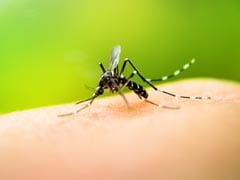In this article, we outline some dangers involved with using menstrual cups.

If a menstrual cup is not sanitised properly before use, it can introduce harmful bacteria
Menstrual cups are flexible, bell-shaped cups made from medical-grade silicone, rubber, or thermoplastic elastomer that are inserted into the vagina to collect menstrual fluid. Unlike pads or tampons, which absorb the flow, menstrual cups collect it, making them reusable and eco-friendly. They can be worn for up to 12 hours before needing to be emptied, washed, and reinserted. While they offer benefits like cost savings and reduced environmental impact, improper use or lack of hygiene can pose potential health risks. Keep reading as we outline some dangers involved with using menstrual cups.
7 Potential dangers of using menstrual cups
1. Vaginal irritation and allergies
Some women may experience vaginal irritation, itching, or allergic reactions due to sensitivity to silicone or rubber. If a menstrual cup is not made from high-quality medical-grade materials or contains dyes, it can trigger allergic responses. Additionally, improper cleaning or using harsh soaps can disrupt the vaginal pH balance, causing discomfort and infections.
2. Difficulty in insertion and removal
Beginners may find it challenging to insert or remove the cup correctly, leading to pain or discomfort. If not positioned properly, the cup may cause pressure against the vaginal walls or cervix, resulting in cramps or pain. Additionally, incorrect removal techniques, such as pulling too forcefully, can lead to vaginal abrasions or injuries.
3. Increased risk of infections
If a menstrual cup is not sanitised properly before use, it can introduce harmful bacteria into the vaginal canal, leading to bacterial or yeast infections. Using a cup with unclean hands or inserting it without washing it between uses can also increase infection risks, especially if the cup has accumulated menstrual residue.
4. Leaks and spills
If not inserted correctly, a menstrual cup may not form a proper seal with the vaginal walls, leading to leaks. This can be inconvenient, especially in public or during physical activity. Additionally, removing the cup too quickly or at an incorrect angle can cause spills, creating a mess and increasing the risk of exposure to bacteria.
5. Disrupting the vaginal flora
The vagina has a natural microbiome that maintains its health and pH balance. Frequent use of a menstrual cup, especially without proper hygiene, may disrupt this balance, increasing the risk of bacterial vaginosis (BV) or yeast infections. This can result in symptoms like unusual discharge, foul odour, and irritation.
6. Urinary issues
A menstrual cup, if incorrectly positioned, may press against the urethra or bladder, causing discomfort while urinating or leading to urinary retention. Some women report difficulty emptying their bladder completely when using a menstrual cup, which can increase the risk of urinary tract infections (UTIs).
7. Potential for internal injuries
If a user applies excessive force during insertion or removal, it can cause small tears or abrasions in the vaginal walls. This is particularly risky for women with conditions like vaginal dryness or those who have just given birth. Such injuries can cause pain, increase infection risk, and delay healing.
While menstrual cups are an excellent eco-friendly and cost-effective alternative to traditional period products, they require proper usage, hygiene, and selection to prevent potential health risks. Consulting a healthcare provider before switching to a menstrual cup can help ensure a safe and comfortable experience.
Disclaimer: This content including advice provides generic information only. It is in no way a substitute for a qualified medical opinion. Always consult a specialist or your own doctor for more information. NDTV does not claim responsibility for this information.
DoctorNDTV is the one stop site for all your health needs providing the most credible health information, health news and tips with expert advice on healthy living, diet plans, informative videos etc. You can get the most relevant and accurate info you need about health problems like diabetes, cancer, pregnancy, HIV and AIDS, weight loss and many other lifestyle diseases. We have a panel of over 350 experts who help us develop content by giving their valuable inputs and bringing to us the latest in the world of healthcare.












